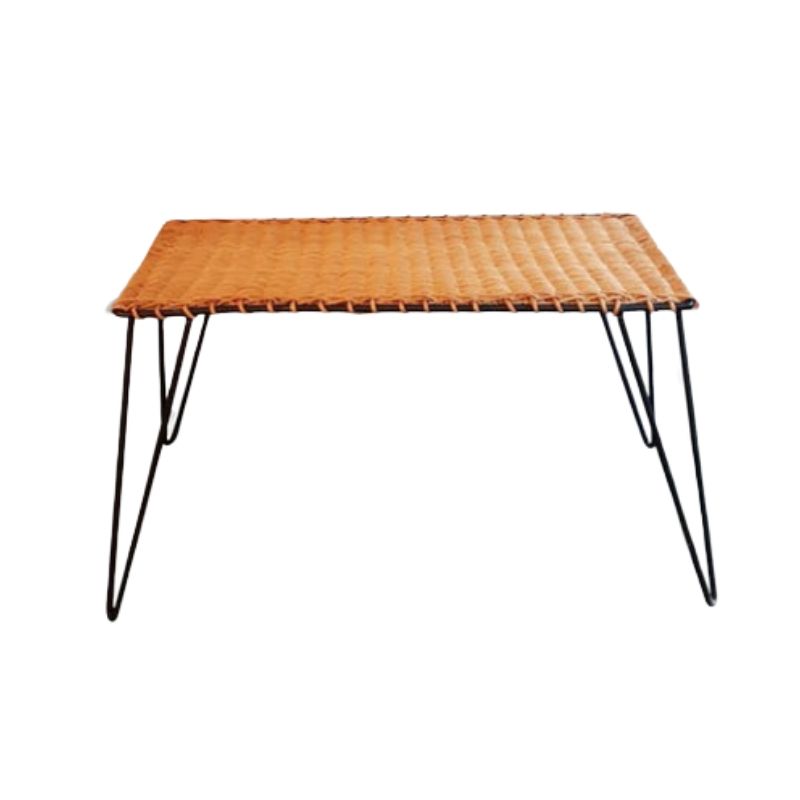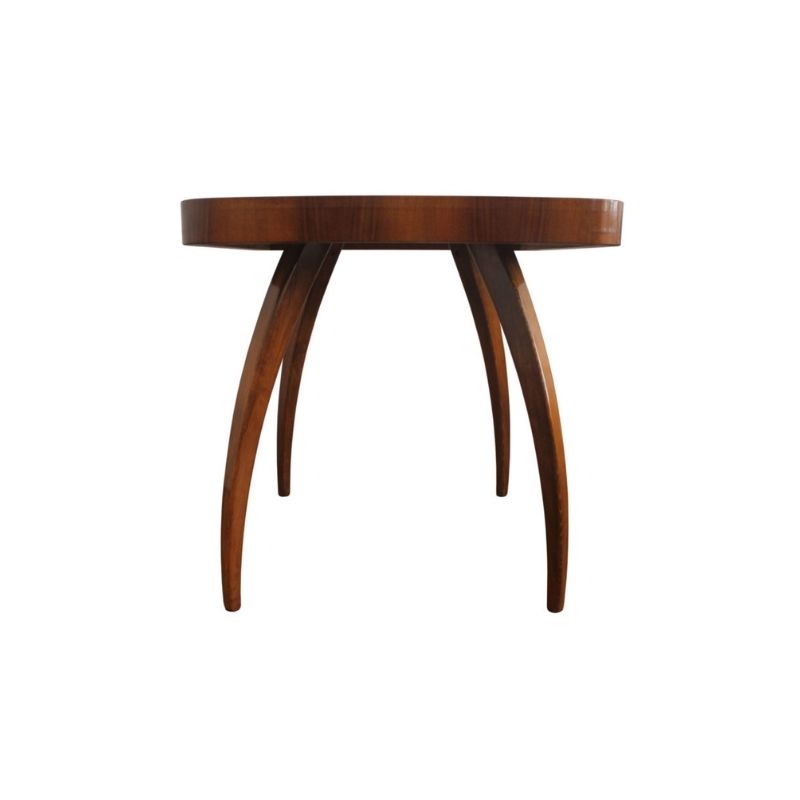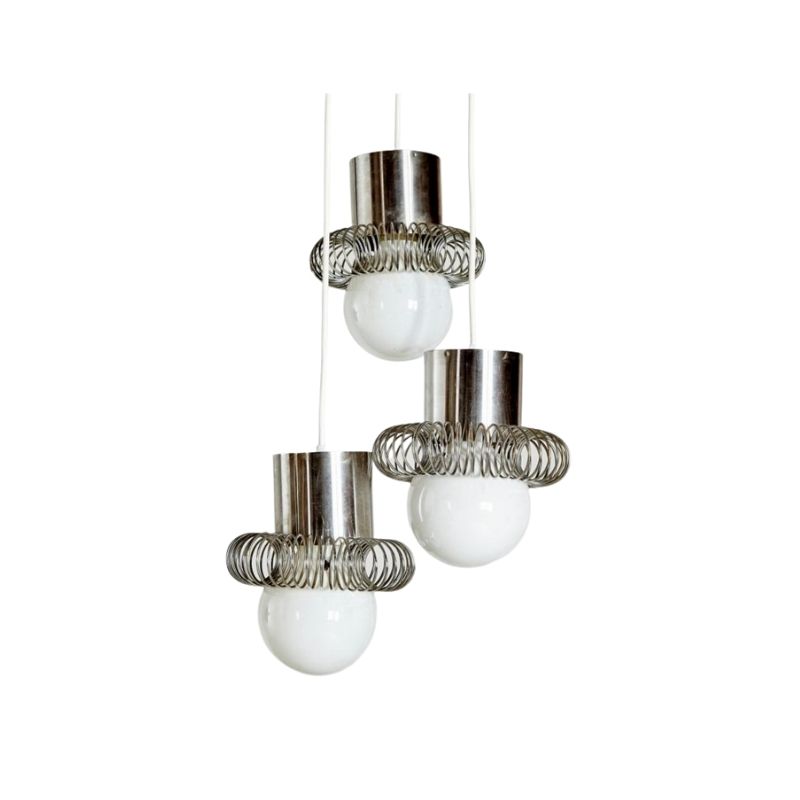I've searched in the forum and have found some insightful things on this topic. However, the majority of info is regarding the lounge chair first, and the fiberglass chairs second. My sick little fella is a DCM.
I have put in an estimate request from Humemodern. I will probably go this route, but first I would like to ask ... is the nature of a DCM failure so much easier to repair than a lounge that it would benefit me to take it on myself (with Alfie's parts)? More than likely I will just send it in, as I am a fan of doing things right and one time. But just thought I'd ask.
Well, as you can see, the sho...
Well, as you can see, the shock mount lost the slightest bit of rubber that was left on the wood. A skin you'd say.
So if I should do it, please be a dear and tell the the epoxy and link to the type of clamp etc. I', not very handy and I don't know my clamps. Is there a clamp size that would work well with this given the moulded wood has an odd shape? And it'll have to span long enough to clamp in the middle of the back.
I am assuming I would clamp with the shock mount not attached to the frame.
Sorry tynellbuyer
I hate to disagree, but please whitespike if you want to continue to enjoy your chair, do not use 5 minute epoxy to repair your shockmount. It is too brittle when it dries and you will have the same problem down the road, only next time you will also be dealing with hard, dried epoxy as well as wood and rubber.
You can repair it yourself, but you need the correct adhesive. I've used it before, though I can't recall the exact one, it's made by 3M (they make loads of different adhesives). I'm sure I have it written down somewhere, I'll see if I can find it.
The key thing is that the adhesive needs to remain flexible after it dries. As I'm sure you know, the back on the DCM has a fair amount of flex and give when you are sitting in it. If you use an adhesive or glue that becomes hard or brittle, I'm afraid you will have the same problem.
You can also send your back to Herman Miller, they don't charge that much for the repair and they will put a new shockmount on there for you.
I'm doubtful that
the plywood flexes enough to be a problem over a two-inch area -- the rubber mount is also flexible, and a thin layer of almost any adhesive will bend a bit -- but in any event the right adhesive is important.
If you can find a way to rest the back on a table or counter in such a way that the shock-mount area is level -- parallel to the floor -- then you can use a weight as a clamp. Epoxies are very viscous when wet -- a good lubricant, in effect. Always do a trial clamping without glue, to see if everything works. Be prepared for the lubrication of the glue.
You can avoid wiping the area while the glue is wet by carefully masking the wood around the shockmount location with masking tape. The weight can be removed after 20 minutes or so, and the tape and squeezed-out glue will still be pliable enough to roll and stretch; at this point it can still be removed from surfaces. Do this carefully, then let the piece rest overnight. If you can do this without removing the weight, so much the better.
Another clamping alternative is to use a spring stick to the ceiling -- a flexible piece of molding or dowel, etc, that you cut just a bit longer than the distance from the top of the mount to the ceiling, and flex into place.
Be sure to get transparent epoxy. Do a test on a scrap to determine the best time to remove the tape and squeeze-out.
Remember that a professional repairer would much rather get the piece freshly broken than one that has had an ineffective repair attempt. So, do it right the first time, or not at all !
such great responses
weighing my options. I will let you know what I do!
Pegboard - if you find a link directly to the epoxy then that would be great.
Ine reading about the 670 repairs, I think you are using the same stuff that has a minimum order of two tubes. At around 75 bucks or so for both.
If that's the case I think sending off would be not much more and fool proof.
Waiting on an estimate from Alfie. Honestly, I'd love to do it myself, bc more can happen along the way.
tynellbuyer - how long have you owned a chair that has been repaired in this manner .... or at least how long have you been privy to the outcome (i.e. a repair for someone you know who is still using it). Your method, while I understand Pegboard's concern, sounds easiest. But of course, I do want to do it "right." Would rather not let this happen again to the same spot.
But knowing how to repair would be great as I have 6 of these chairs and each have 5 mounts. That's 29 more potential opportunities in the future for this very problem!
I've re-glued 7 of those
pucks on my set of 10 year-old DCMs using both West System clear unthickened epoxy and PC-7. They started popping about a year after I got them and, about once a year, another one goes. They receive daily family use around the kitchen table. I've yet to have one of my repairs fail. I used the weight method for clamping and I removed as much of the old glue as possible from the plywood. I haven't had any rubber left behind on the wood after failure. The joints failed at the steel washer, which was left residue-free. I roughened the metal further with course sandpaper and cleaned everything with acetone before regluing. It is some work, but manageable for those inclined. PC-7 is dark grey, so I would mask the surrounding area with painter's tape to keep squeeze-out from getting into the grain of the ash.
I'll plug Alfie at this point, too. He helped me with good advice on my 670 shock mount re-glue which has held up under heavy use by teenagers for almost 5 years now, and also sold me a comlete set of used 670/671 cushions for a c-note. I think he's a stand-up guy and I wouldn't hesitate to use him for repairs.
tynell, if I
understand your question, as long as the spot on the ceiling where you place the upper end if the springy rod is directly over (perpendicular to) the glued surface, the puck shouldn't slide. Though the rod is slightly bent, the direction of pressure is the same as if it were straight.
The tricky part would be arranging the chair back so that it sat on the table in the correct attitude -- perhaps on some books, with an old towel thrown over them. Sliding or rocking would be a problem. The same problem would exist when using weight as a clamp . . .
7 of them!
Geez, in 10 years you've had 7 failures?! That is a bit disconcerting. I don't want to have to deal with this over and over. How is it that many vintage ones have survived without this happening?
I swear, the more I hear about this stuff the more I want to sell a nice bit pf my eames stuff... less shockmounts to deal with.
If you need any help, please contact us at – info@designaddict.com









